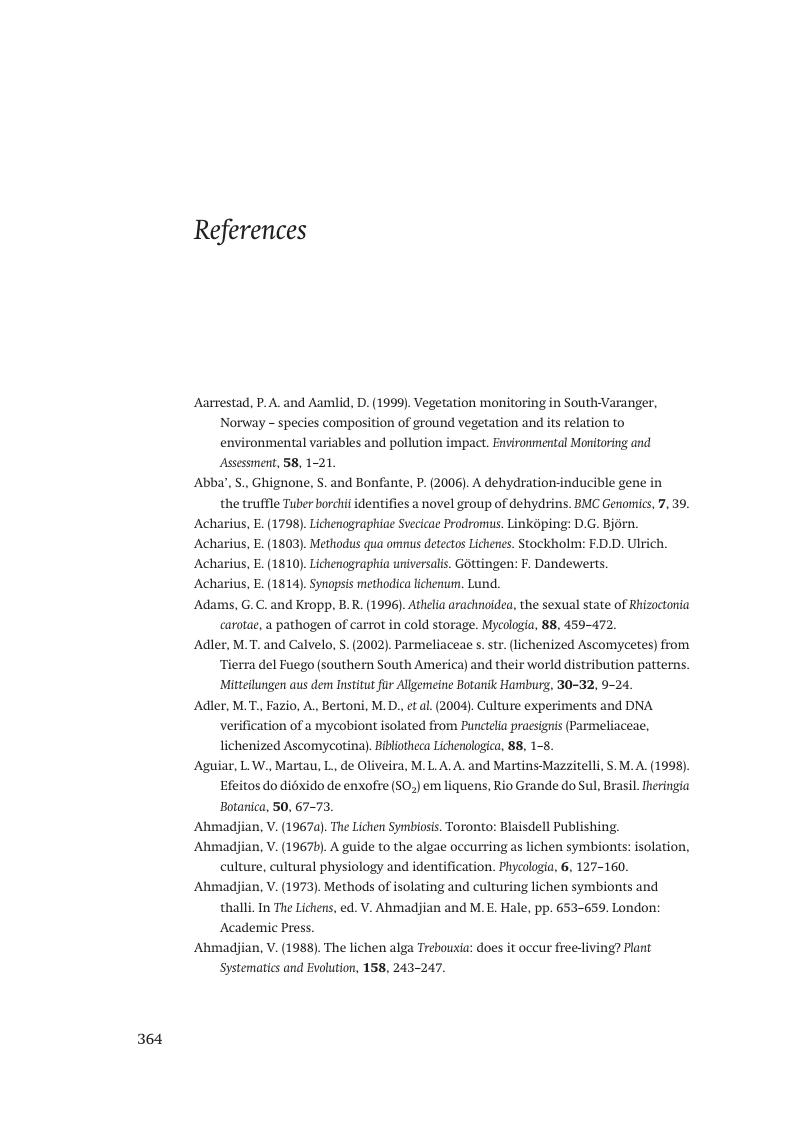Book contents
- Frontmatter
- Contents
- List of contributors
- Preface
- 1 Introduction
- 2 Photobionts
- 3 Mycobionts
- 4 Thallus morphology and anatomy
- 5 Morphogenesis
- 6 Sexual reproduction in lichen-forming ascomycetes
- 7 Biochemistry and secondary metabolites
- 8 Stress physiology and the symbiosis
- 9 Physiological ecology of carbon dioxide exchange
- 10 The carbon economy of lichens
- 11 Nitrogen, its metabolism and potential contribution to ecosystems
- 12 Nutrients, elemental accumulation, and mineral cycling
- 13 Individuals and populations of lichens
- 14 Environmental role of lichens
- 15 Lichen sensitivity to air pollution
- 16 Lichen biogeography
- 17 Systematics of lichenized fungi
- Appendix: Culture methods for lichens and lichen symbionts
- References
- Taxon index
- Subject index
- References
References
Published online by Cambridge University Press: 05 September 2012
- Frontmatter
- Contents
- List of contributors
- Preface
- 1 Introduction
- 2 Photobionts
- 3 Mycobionts
- 4 Thallus morphology and anatomy
- 5 Morphogenesis
- 6 Sexual reproduction in lichen-forming ascomycetes
- 7 Biochemistry and secondary metabolites
- 8 Stress physiology and the symbiosis
- 9 Physiological ecology of carbon dioxide exchange
- 10 The carbon economy of lichens
- 11 Nitrogen, its metabolism and potential contribution to ecosystems
- 12 Nutrients, elemental accumulation, and mineral cycling
- 13 Individuals and populations of lichens
- 14 Environmental role of lichens
- 15 Lichen sensitivity to air pollution
- 16 Lichen biogeography
- 17 Systematics of lichenized fungi
- Appendix: Culture methods for lichens and lichen symbionts
- References
- Taxon index
- Subject index
- References
Summary

- Type
- Chapter
- Information
- Lichen Biology , pp. 364 - 461Publisher: Cambridge University PressPrint publication year: 2008
References
- 1
- Cited by



